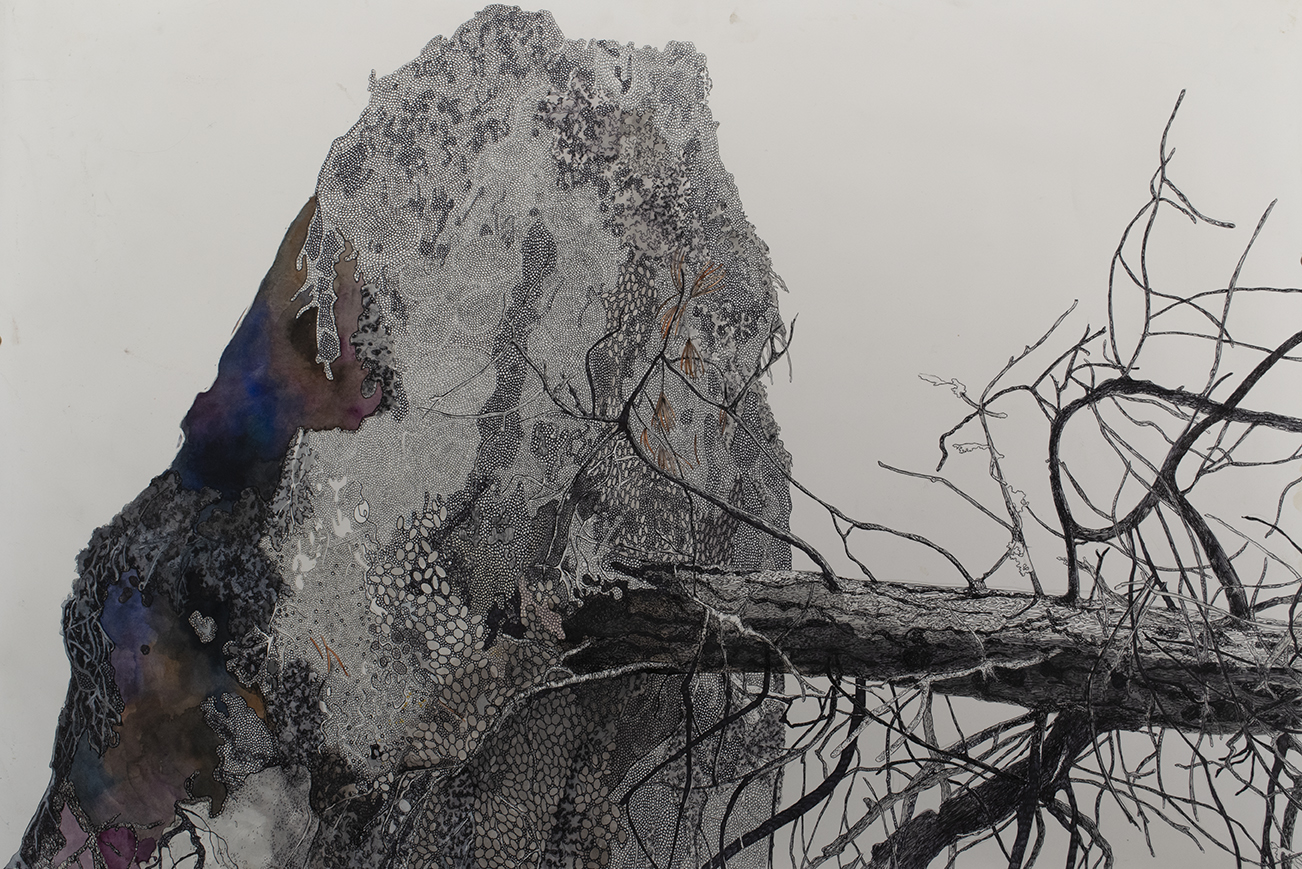Art, Ecology, and Resilience: ISU's Ahola-Young Receives Visual Arts Fellowship
August 29, 2024

Three Idaho artists have been awarded 2025 Fellowships in Visual Arts: Laura Ahola-Young (Drawing and Painting, Idaho State), Stacy Isenbarger (Sculpture, University of Idaho), and Astri Snodgrass (Painting, Boise State). The awards, given every two years by the Idaho Commission on the Arts, recognize outstanding artists, honoring work deemed to exhibit the highest artistic merit during peer review. Applicants were reviewed anonymously in a highly competitive process by panelists from out of state and were judged on the basis of existing work and professional history. Fellowship winners will each receive $5,000.
The Idaho Commission on the Arts provides funding and support for arts programs across Idaho, aiming to enhance community engagement and arts education. They offer grants, organize events, and support individual artists and traditional arts, focusing on strengthening arts education and fostering creativity throughout the state.
Laura Ahola-Young, ISU professor of art, says she is excited to use the fellowship funds to further her artistic practice. The fellowship will support creation of new work, materials, shipping, and exhibition costs.
Ahola-Young says that she is honored to receive this recognition. “I feel that I am part of a trifecta. All three of us that received the 2025 fellowship in Visual Arts are female professors in the arts. I am proud to represent ISU along with fellow artists Astri Snodgras and Stacy Isenbarger.”
Ahola-Young's work centers around exploring the intersections of art, ecology, and climate change by examining the unique lives of plants and trees, particularly within the boreal forest, through the lenses of Critical Plant Theory, plant science, and personal narratives. Ahola-Young describes her recent work as an investigation and negotiation of these topics and observations through drawings and paintings based on her own photographs of fallen trees.
Ahola-Young hails from Ely, Minnesota, a small, rural town known as “the end of the road,” located at the edge of the Boundary Waters Canoe Area Wilderness (BWCAW). Often recorded as the coldest place in America during February and March, Ely sits on glacial bedrock where growing food and surviving require a deep understanding of resilience.
Ahola-Young explains: “The BWCAW is part of the boreal forest, a unique ecosystem with a shifting treeline that is gradually moving north. For years, I have photographed fallen conifers—Eastern White Cedar, Jack Pine, White Pine, and Red Pine—that have grown on this ancient bedrock. These trees, which once stood tall on only eight to ten inches of peat moss, bring entire sections of the earth with them when they fall, leaving a mark on the landscape like monuments to the past. Remarkably, fallen trees contain more cellular life than living ones, and forestry practices are beginning to acknowledge this by leaving them to replenish the soil's nutrients. I am captivated by the science of decay, soil, fallen trees, and the role of wind, seeing them all as indicators of climate change. Trees live and die in ways distinct from humans, and I find myself drawn to understanding these differences—exploring new ways of being through the vegetal world.”
Currently, she is planning a new series inspired by fire training she has completed, always setting new goals to push her practice further. This drive to constantly challenge herself is also something she brings to her teaching. As Ahola-Young puts it, "When I help students through a struggle with a painting, it is because I can help. I have struggled and still struggle. Painting is not easy. Every time I see a student overcome, I can take that to my own studio, and it helps me."
She encourages her students to adopt the same mindset: "Stop getting in your own way… stop thinking, just do. Keep doing."
Categories:
